― 押しボタン探しから、共創の検証ループへ ―
導入:最初の不安「次の一手が見えない」をどう越える?
起業から3〜4年。撤退するほどではないが、「このままでは行き詰まる」という壁に、多くの中小・ベンチャーはぶつかる。
「自社の勝ち筋がどこにあるのか」「誰と、どんな検証を回せば確信に変わるのか」
最初の不安はそこにある。
堅本康彦さんは、そんな局面で“戦略シナリオ職人”として、顧客と並走しながらシナリオを共創し、“スケールのための押しボタン”を一緒に探す。
登場人物紹介:堅本康彦さん
役割: 中小・ベンチャー企業の事業立上げとマーケティング支援。
スタンス: 「戦略シナリオ職人」=顧客の事実に向き合い、検証を共創し、勝ち筋の仕組みを設計する伴走者。
🔹 仕事は“押しボタン探し”から始まる
堅本さんは、壁に直面した企業とともに「スケールのための押しボタン」を探し当てることを役割としている。
課題の起点は“顧客の事実(ファクト)”にあるという前提に立ち、市場調査→仮説立案→リアルモックアップ(No Code等)→顧客試用→学習のループを踏む。
堅本さん:「陥るパターンはだいたい決まっているんです。知識不足や経験不足、あるいは顧客の課題を深く理解せずに“これが解決策だろう”と自己完結してしまう。結果として、プロダクトアウト型で失敗してしまうケースが多いんです。」
🔹 “甘い言葉”に頼らない検証力:共創コミュニティでファクトを増やす
ロイヤル顧客の声は重要だが、好意的すぎて冷静さを欠くことがある。そこで、別クラスターの検証を重ねることで、ファクトの偏りを是正する。
堅本さん:「だから、既存顧客だけでなく、別のクラスターを作って検証します。100人規模のインタビューコミュニティを立ち上げ、モニター制度としてテストを繰り返す。両輪があって初めて正しい市場理解につながるんです。」
🔹 “人を見抜く”1ヶ月の対話:伴走の準備運動
パートナーからの紹介であっても、最初の1ヶ月は定期対話を重ねる。人となり、過去の顧客関与の深さを見極める期間だ。
堅本さん:「どんな事業をやってきたのか、どう顧客と関わってきたのか。過去を聞いていると、単なる業務委託しか経験していなかったりして“顧客理解”をしてこなかったケースも多い。そんなときは一緒に顧客に寄り添う練習から始めるんです。そこで素直に吸収していける人なら一緒にやれる。でも、半分しか聞かずに“そうだよねー”で流す人は続きません。」
🔹 売り込まなくても売れる:戦略シナリオを仕組み化する
堅本さんのマーケティングの定義はシンプルだ。
堅本さん:「売り込まなくても売れる仕組み仕掛け作りです。」
顧客の課題を丁寧にすくい上げ、「解決してほしい」という意欲に変換する。さらに解決後の喜びが広がる動線まで設計する。
堅本さん:「顧客の言葉はさまざまですが、薄めて俯瞰していくと“みんな同じことを言っている”と見えてくる。その瞬間に事業の成功要件が浮かび上がるんです。」
🔹 小さくても強い:7人で、関係性と適材適所に張る
会社を大きくすることにこだわらず、「7」というサイズ感に好みがあるという。
堅本さん:「僕は“7”という数字が好きなんです。従業員も7人。小さくても、芯の強い会社であればいい。」
必要に応じて、各種マーケティング施策を実行できる企業、更にアカウンティングやファイナンス、ITやHRなど専門人材をアサインできるパートナーネットワークを活かす。
スケール=人数ではなく、強い関係性×適材適所で戦略シナリオを前に進める。
🔹 社会課題をビジネスで解く:サステナブルな戦略シナリオ
堅本さんは、経済的成果と社会的インパクトの両立を前提に考える。
地球温暖化やエネルギー問題、海洋汚染といった地球規模の課題を、ビジネスの仕組みで解決する視点だ。
堅本さん:「離職率の高さや採用難も、実は社会課題とつながっているんです。例えば“環境に優しい会社”と発信できれば、就活中の若者はそこに魅力を感じて入社する。社会貢献と事業成長は両立できる。だから僕はそこに取り組みたいんです。」
🔹 日本こそ、サステナブル経営の先進地を目指せる
堅本さん:「北欧は社会課題やサステナブル経営の仕組みづくりで本当に進んでいる。でも、すでに完成されているから入り込む余地は少ないかもしれない。」
一方、日本には100年以上続く企業が2万6千社以上(世界の約4割)存在する。三方よしや暖簾分けといった文化は、すでにサステナブルな知恵として機能してきた。
堅本さんが目指すのは、日本の老舗が育んだサステナブル経営を現代に翻訳し、世界に伝え、国内企業も学び直す循環をつくること。
🔹 人生のタイトルは『ファクトトロジック』
堅本さん:「顧客の課題や痛みという“ファクト”に真正面から向き合い、それをロジカルに整理し、解決の仕組みに落とし込む。需要が生まれるメカニズムを科学的に見極める。僕はずっと、その繰り返しで生きてきました。」
派手な逆転劇ではなく、事実を拾い、ロジックに束ね、仕組みに落とす。
堅本さん:「結局は、どんな華やかな戦略も“事実”を見誤れば意味がない。だから僕にとっての人生は、事実を起点に可能性を広げていく“ファクトトロジック”なんです。」
最後に、一連の流れを堅本さんがまとめてくれた。
さすが“戦略シナリオ職人”──と唸らずにはいられない、明快な整理がこちらだ。
伴走型・共創プロセス(まとめ)
1)状況診断:投資後3〜4年の壁を特定し、既存仮説の自己完結を外す。
2)検証設計:市場調査→仮説→モック→試用→学習を、顧客と共創で回す。
3)コミュニティ化:ロイヤル顧客+別クラスター(100人規模)で偏りを是正。
4)関係性の整地:最初の1ヶ月の対話で伴走適性を見極め、顧客理解の練習を共有。
5)仕組み化:“売り込まなくても売れる”設計(トリガーと動線)を図面化し実装。
6)サステナビリティ:社会課題と事業成長の両立を、採用・定着にも接続。
7)ネットワーク:小さく強い組織×専門家アサインで、要所を押さえる。
堅本さんが出会いたいのは、もちろん「次の一手」を模索している企業だ。けれど同時に、この姿勢は私たち誰にとってもヒントになる。事実から目を逸らさず、耳の痛い声も受け止める。自分だけで完結せず、他者と共創して検証する。仕組みとして再現できる“勝ち筋”を見極める。そんな在り方そのものが、彼の仕事の核であり、生き方でもある。
戦略を語りながらも、最後に必ず「人」を見る。
堅本康彦さんという“職人”の存在が、多くの挑戦者に勇気を与えているのだと感じた。
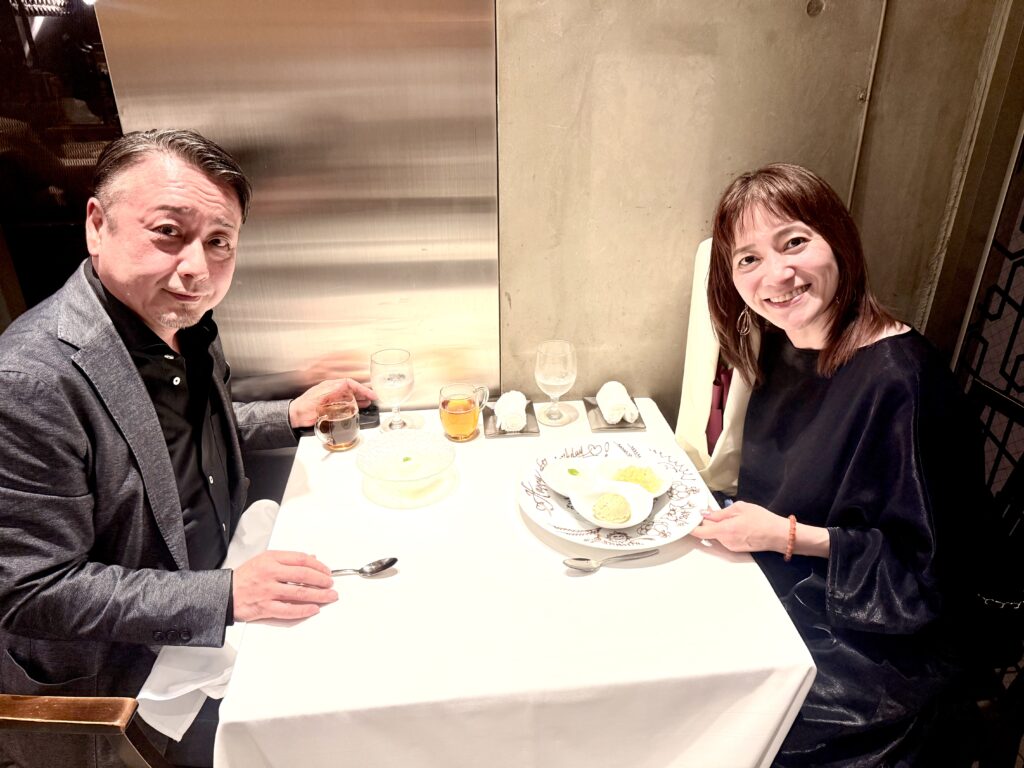
🇺🇸English
Finding the “Winning Scenario” with a Strategic Scenario Craftsman
Yasuhiko Katamoto,
President of F2C, Inc.
— From Push-Button Discovery to Co-Creation Loops of Validation —
The First Anxiety: “We Can’t See the Next Move”
Three to four years after launching, many startups and SMEs hit a wall. They are not failing, but they sense that “things can’t continue like this.”
Where is the winning scenario? Who should we validate with, and how do we turn doubt into conviction?
This is the moment when Yasuhiko Katamoto steps in—as a self-proclaimed Strategic Scenario Craftsman. He runs alongside his clients, co-creating scenarios and uncovering the “push buttons” for scaling.
Who Is Yasuhiko Katamoto?
Role: Supporting business design and marketing for SMEs and startups.
Stance: Strategic Scenario Craftsman = a partner who confronts facts, co-creates validation, and designs systems to find the winning path.
🔹 Work Begins with the “Push Button” Search
Katamoto’s job starts with identifying the “push button” that enables scaling.
He assumes that every challenge originates in customer facts. His process follows a loop of market research → hypothesis → mock-up (using no-code tools, etc.) → customer trial → learning.
“The failure patterns are predictable,” he explains. “Knowledge gaps, lack of experience, or simply assuming ‘this must be the solution’ without truly understanding customer pain. That’s how product-out thinking leads to failure.”
🔹 Beyond “Sweet Words”: Validating Through Co-Creation
Customer loyalty voices matter—but they are often too favorable to see reality clearly. Katamoto deliberately tests outside clusters to balance the bias.
“That’s why we build new segments, like 100-person interview communities, and run monitor tests. Only by combining both loyal customers and fresh perspectives can you reach an accurate market understanding.”
🔹 One Month of Dialogue: Testing Human Fit
Even when introduced by a trusted partner, Katamoto never commits right away. He spends the first month in regular dialogue, assessing character and past engagement with customers.
“If someone has only done contract work, they may never have truly practiced customer understanding. Then we start with the basics—practicing how to stand in the customer’s shoes. If they absorb that sincerely, we can work together. But if they just nod along and half-listen, it won’t last.”
🔹 Selling Without Selling: Designing Strategic Scenarios
Katamoto’s definition of marketing is strikingly simple:
“It’s about creating a mechanism where products sell without being sold.”
By carefully surfacing customer pain, transforming it into a desire for resolution, and mapping out the post-solution joy, he designs repeatable pathways to sales.
“Customers use different words, but when you zoom out and ‘thin’ their responses, you realize they’re saying the same thing. That’s the moment the true success factors emerge.”
🔹 Small but Strong: The Power of Seven
Katamoto prefers staying lean rather than scaling headcount.
“I like the number seven. We have seven employees. For me, small but strong is enough.”
Instead of size, he leverages trusted networks—partners in accounting, finance, IT, HR—who can be assigned as needed.
Scaling means strong relationships × right people in the right place, not just numbers.
🔹 Solving Social Issues Through Business
For Katamoto, business success and social impact must go hand in hand. From climate change to energy and marine pollution, he sees these global issues as solvable through business systems.
“Even high turnover or hiring struggles are social issues. If a company can credibly present itself as environmentally responsible, job seekers feel more drawn to join. Social contribution and business growth are not trade-offs—they reinforce each other.”
🔹 Japan as a Pioneer of Sustainable Management
“The Nordics are far ahead in building systems for sustainable management. But because they’re already mature, there may be little room to enter,” Katamoto notes.
Japan, on the other hand, has more than 26,000 companies over 100 years old—about 40% of the world’s total. Traditions like Sanpo Yoshi (“good for buyer, good for seller, good for society”) and Noren-wake (branching out through brand inheritance) have embodied sustainable wisdom for centuries.
Katamoto envisions translating this legacy into modern frameworks—so Japanese firms can relearn their own heritage, and the world can benefit from it.
🔹 A Life Titled Fact Logic
If his life were a movie, Katamoto would title it Fact Logic.
“I’ve always faced customer pain points—the facts—head-on, organized them logically, and built systems for solutions. Identifying the mechanisms of demand generation through evidence has been my way of life.”
No flashy turnarounds. Just picking up facts, weaving them into logic, and embedding them into systems.
“No matter how glamorous the strategy, if you misread the facts, it’s meaningless. My life has been about expanding possibility from facts—that’s Fact Logic.”
🔹 The Strategic Scenario Process (Summary)
Katamoto distills his approach into seven steps:
- Diagnosis – Identify the post-3-year wall and break out of self-contained hypotheses.
- Validation Design – Market research → hypothesis → mock-up → trial → learning, co-created with customers.
- Community – Balance loyal customers with outside clusters (100+ interviews).
- Relational Fit – One month of dialogue to test partner suitability and practice customer empathy.
- Systemization – Design “selling without selling” mechanisms (triggers and pathways).
- Sustainability – Align business growth with solving social issues, including hiring and retention.
- Network – Small, strong teams + expert partners to secure the essentials.
🔹 Lessons for All of Us
Of course, Katamoto seeks to work with companies searching for their “next move.”
But his stance offers lessons for anyone:
- Face facts—even uncomfortable ones.
- Don’t go it alone—co-create and validate with others.
- Find winning patterns you can systemize, not just improvise.
He may call himself a craftsman of scenarios, but ultimately, he never forgets to look at the person behind the strategy.
And in that, Yasuhiko Katamoto continues to give courage to countless challengers.
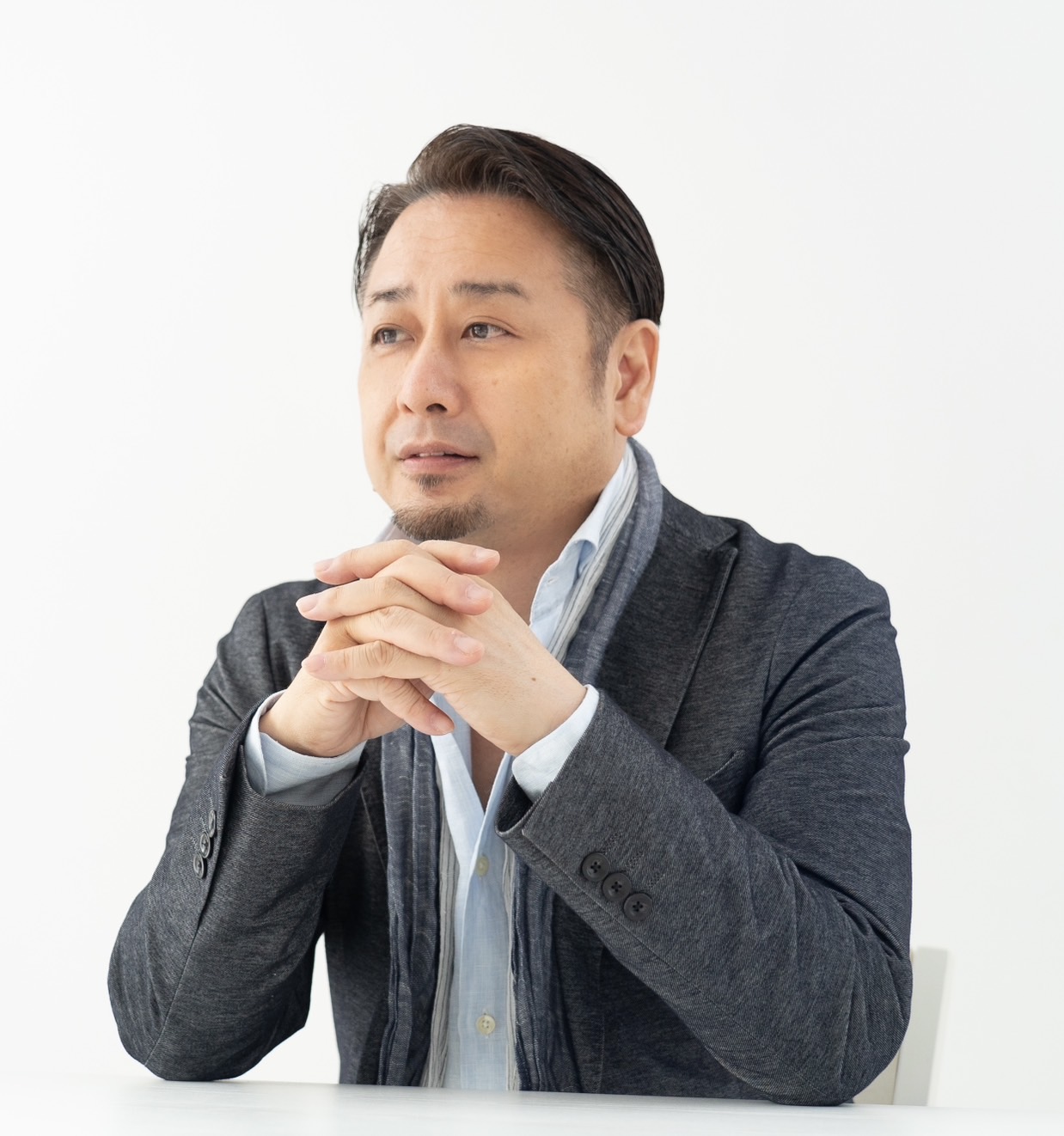
【PROFILE】
堅本康彦(かたもと・やすひこ)
エフ・ツー・シー株式会社 代表取締役。
中小・ベンチャー企業向けに事業立案・マーケティング支援を行う。「売り込まなくても売れる仕組み」を合言葉に、顧客理解を徹底し、需要発生のメカニズムを科学する戦略シナリオ職人。老舗企業の知恵や社会課題への視点を取り入れ、持続可能な経営を探求している。
Yasuhiko Katamoto
President, F2C Co., Ltd.
Supports SMEs and startups with business design and marketing. Known as the Strategic Scenario Craftsman, he focuses on “mechanisms where products sell without being sold.” By grounding strategy in customer facts, he seeks to scientifically identify demand mechanisms and build sustainable growth models. Drawing on the wisdom of Japan’s long-lived companies and integrating perspectives on social issues, he pursues the future of sustainable management.

【PROFILE】
真綺(Maki)
語りの芸術家/インタビュアー/コミュニケーション・スペシャリスト
8年間“しつもん力”を教え、日本語と英語の間で人の想いを橋渡ししてきた。
これまで国内外で、経営者、アーティスト、国際的イベントの登壇者など延べ数千人と対話。
世界的な授賞式や王室叙任式のスピーチ・通訳も担当し、言葉と存在感の両面から人の魅力を引き出す。
Maki
Word Painter / Interviewer / Communication Specialist
For eight years, Maki has taught the art of asking powerful questions, bridging stories between Japanese and English.
She has engaged in thousands of conversations with business leaders, artists, and speakers at international events, both in Japan and abroad.
Her work includes speeches and interpretation for global award ceremonies and royal investitures, capturing and conveying the essence of a person through both words and presence.
経営者の存在感を、言葉とストーリーに刻む。
真綺による日英インタビューにご興味のある企業様はこちらからお問い合わせください。


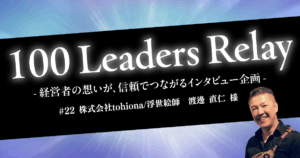
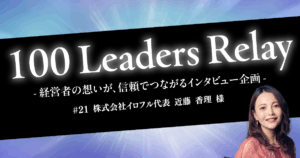
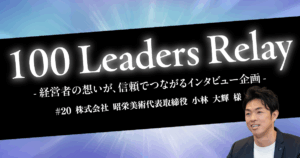
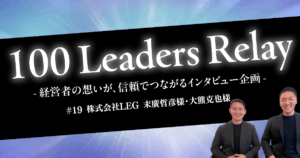
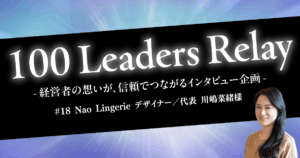
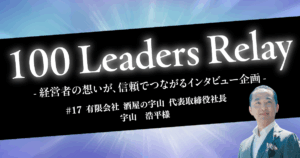
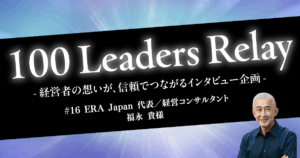
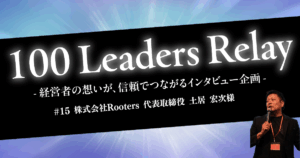
コメント